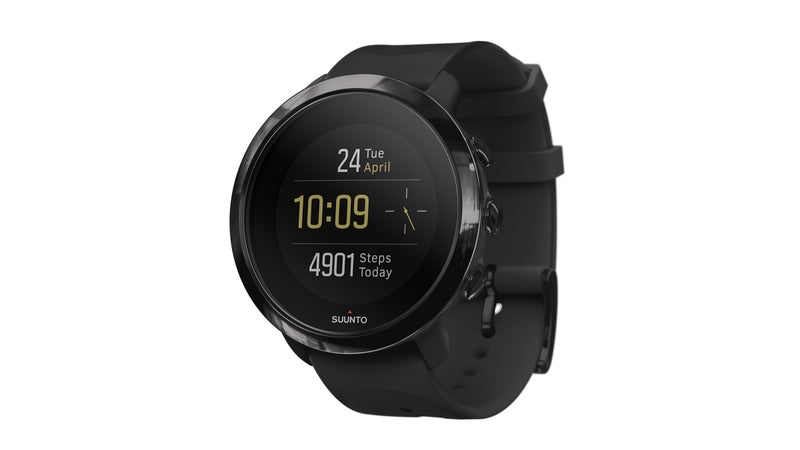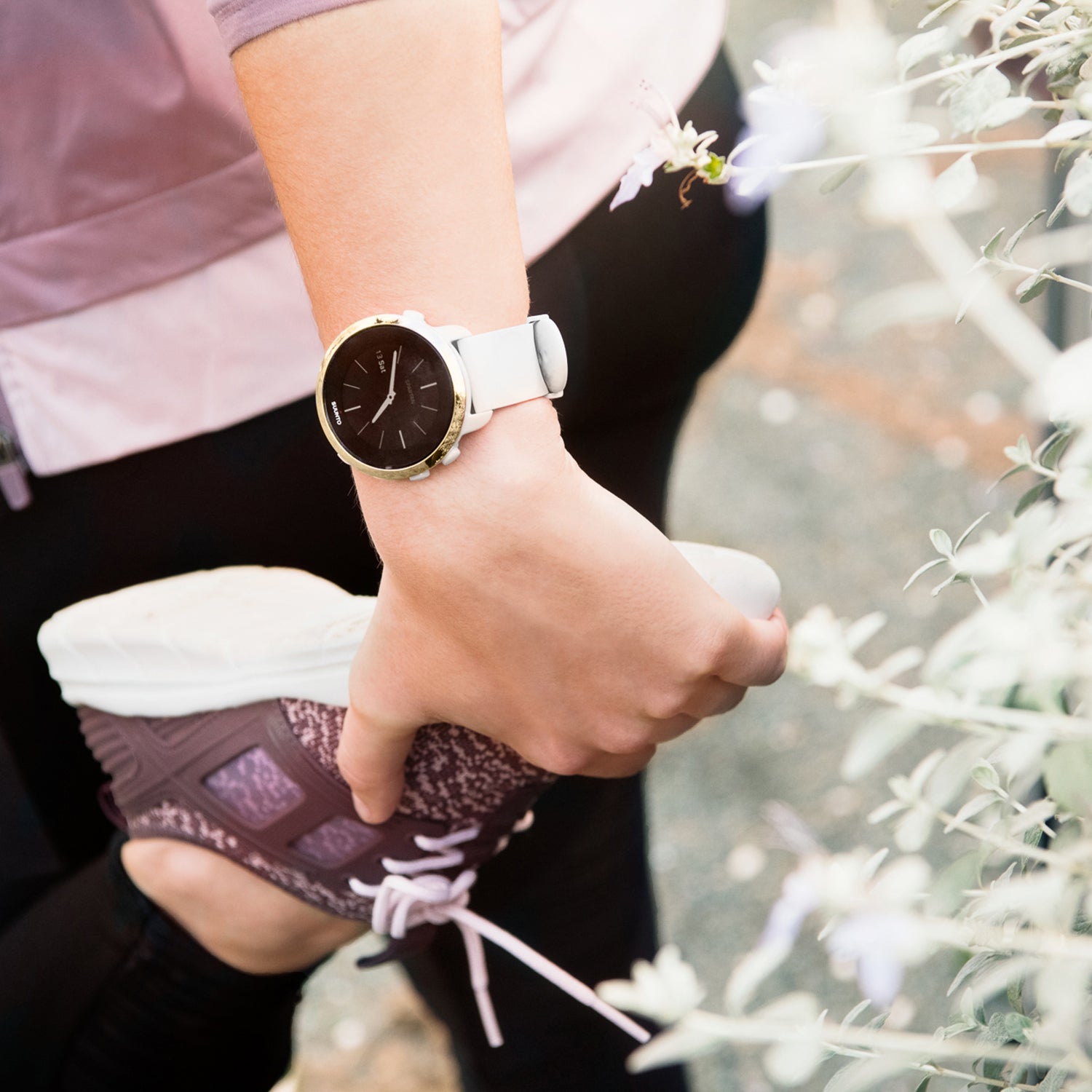Suunto is known for its high-end watches and top-tier technology, most of which is geared toward hardened mountain athletes and data nerds. Last week, the Finnish brand announced the newest addition to its line: the Suunto .
Launching April 25 and retailing for $200 (the white and black colorways retail for $230), the 3 Fitness is a more affordable, approachable watch—a first for the company. It won’t have a barometric altimeter, GLONASS satellite navigation, or built-in GPS (though you’ll be able to connect it to your phone for GPS). Instead, it’s designed for a general fitness audience, with all the niceties like sleep tracking, wrist-based heart rate monitoring, step counting, and built-in training guidance.
Sound familiar? Suunto is far from the only sport-watch brand to come out with a less-technical, lifestyle-oriented product that provides general health and fitness tracking without things like built-in GPS—think Fitbit Versa, Polar , and Garmin .
Initially, I was skeptical: Suunto, the company that pioneered the multifunctional sports watch, was going basic. But then two weeks ago I got my hands on a sample of the 3 Fitness and was pleasantly surprised. This doesn’t feel like a high-end sports watch with its guts ripped out. It’s technical in its own right and rich with features that both hardcore and recreational athletes can appreciate.

One of this watch’s best qualities is its simplicity. It has a clean, classic look and isn’t riddled with unnecessary apps. In fact, there are no apps at all. This is a sports watch with some smart features, rather than a smartwatch with some sports features. Like most of its competitors, the 3 Fitness will connect to your phone to give you quick notifications (if you want). However, it doesn’t have a touchscreen and won’t make wallet-free payments, play music, or offer you stress-reducing breathing exercises. It just tracks your sleep, your heart rate, and your exercise.
The 3 Fitness pulls the customizable activity tracking feature that’s been a staple of Suunto’s for years, with the option to set pace, heart rate, distance, and duration targets. Say you want to run one hour at a nine-minute pace or two hours at a heart rate between 120 and 130 beats per minute—just click a few buttons, and your watch will buzz to keep you on pace or in your goal HR zone. A progress meter shows you how much of the planned workout you’ve completed. You can also set an interval counter to manage reps, interval duration, and recovery time. These details seem small, but as a recreational runner who’s never quite been able to internalize what an 8:50 pace feels like, the added guidance is a huge boon.
The watch’s main hallmark is its adaptive training plan, which resets every day based on how hard you went the day before and how well recovered you are. After my first run with connected GPS, the watch estimated my V02max and spat out a seven-day training plan to improve my score. The plan looked something like this:
- Monday: 50 minutes moderate
- Tuesday: 25 minutes moderate
- Thursday: 45 minutes easy
- Saturday: 35 minutes very hard
The built-in training plan is certainly a nice feature, particularly since it’s not a fixed, cookie-cutter schedule. And because Suunto calculates V02max based on a combination of your max heart rate, how long you can sustain it, how quickly you recover, and the variation between your heartbeats, I’m confident I can trust the number it’s giving me (more so, at least, than watches that a more basic measure of heart rate and pace or some combination of age, height, and weight).
Many teched-out sports watches are guilty of information overload—they tell you how you slept, what your V02max is, how fast you ran, how much time you need to recover—but unless you’re a coach or one of those data nerds, it’s hard to know what to do with all that information. The 3 Fitness weaves the data together into something you don’t need an Excel spreadsheet to use.
Of course, I’d love it if this watch had built-in GPS, though that would add to the cost. However, among its fitness-oriented, integrated-GPS-less peers, this one hits pretty close to perfect. It looks like an actual watch, it’s comfortable and stylish enough to wear all day, it’s not trying to take the place of your phone, and it still gives you the benefit of all that trademark Suunto accuracy. In other words: It’s ideal for those who want a basic, less expensive fitness watch that focuses more on quality fitness tracking and less on add-on lifestyle features.


